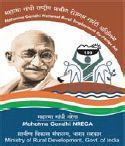Government Programmes
Allocation, release and utilization of funds for safe drinking water in rural and tribal areas under NRDWP for the last three years - PIB release
Posted on 21 Mar, 2011 12:46 PMFunds are released to the States under National Rural Drinking Water Programme (NRDWP) by the Government of India for providing drinking water supply in rural areas covering the rural and tribal areas of the State.
About 30% of rural household’s access piped drinking water from taps. However, full coverage of rural habitations is about 75%.
Plan to make major rivers pollution-free under the NRCP - PIB release
Posted on 18 Mar, 2011 02:49 PMIt covers identified polluted stretches of 39 rivers in 182 towns spread over 20 States. The major rivers covered under the Plan include Ganga, Yamuna, Gomti, Damodar, Satluj, Krishna, Musi, Cauveri and Godavari besides others. Pollution abatement schemes are taken up under the Plan on a cost sharing basis between Centre and States.
Present status of interlinking of rivers project - Press Information Bureau release
Posted on 04 Mar, 2011 02:09 PMThe Government has said that the National Water Development Agency (NWDA) under the Ministry of Water Resources (MoWR) has identified 30 inter-state River links (16 under Peninsular Component & 14 under Himalayan Component) for preparation of Feasibility Reports (FRs). Out of these, FRs of 14 links under Peninsular Component and 2 links (Indian Portion) under Himalayan Component have been completed. Giving this information in written reply to a question in the Lok Sabha, present status of interlinking of rivers in the country, Shri Vincent H. Pala, Minister of State for Water Resources, said that the Five inter-state River links under Peninsular Component namely (i) Ken-Betwa, (ii) Parbati-Kalisindh-Chambal, (iii) Damanganga-Pinjal, (iv) Par-Tapi-Narmada & (v) Godavari (Polavaram)-Krishna (Vijayawada) were identified as priority links for building consensus among the concerned states for taking up their Detailed Project Reports (DPRs).
"Civil society groups to do NREGA audit again"
Posted on 04 Mar, 2011 11:56 AM

Main highlights in this update:
Social impact assessment of resettlement & rehabilitation policies and packages in India - Report of a research project by Centre for Social Development
Posted on 02 Mar, 2011 08:37 AMThe National Resettlement and Rehabilitation (R&R) policy, issued in 2007, recognizes the need to carry out Social Impact Assessment (SIA) as part of the resettlement planning and implementation processes. While an assessment of social impacts prior to the commencement of a new project or expansion of an existing is now obligatory under this new policy, the appropriate guidelines for the purpose do not yet exist. This handbook on conducting social impact assessments aims to fill this gap.
Coastal Regulation Zone Notification 2011: Not the end of the road - An EPW paper
Posted on 01 Mar, 2011 11:59 AMIt falls short of offering greater protection to the coastal ecosystem, recognising the inalienable right of fisherfolk to their habitats and providing them with representation in decision-making.
Steps to create awareness about rainwater harvesting and encouragement to states for implementation of rainwater harvesting projects - PIB release
Posted on 25 Feb, 2011 10:41 AMGiving this information in written reply to a question in the Lok Sabha on the average annual rainfall and rainwater harvesting, Shri Salman Khurshid, Minister of Water Resources, said that rain water is harvested through surface storages and recharge of ground water.The total storage capacity created through major and medium projects is around 225 BCM. The data on quantum of rainwater harvested through groundwater recharging is 433 BCM. Ministry of Water Resources does not maintain the data on quantum of water harvested due to manmade structures separately.It is estimated that the water utilized in 2010 is about 681 BCM.
"The continuing farce called conditional clearances" - Dams, Rivers and People
Posted on 24 Feb, 2011 10:55 AMParticipatory Irrigation Management (PIM) in Andhra Pradesh - An overview - Paper presented at the National Seminar on Water and Culture (2007)
Posted on 14 Feb, 2011 02:57 AMThis paper describes a PIM initiative undertaken by the Government of Andhra Pradesh. The need for PIM in Andhra Pradesh, was felt because farmers, especially those in the lower reaches of the command area of the project, suffer from inadequate and unreliable supplies.





